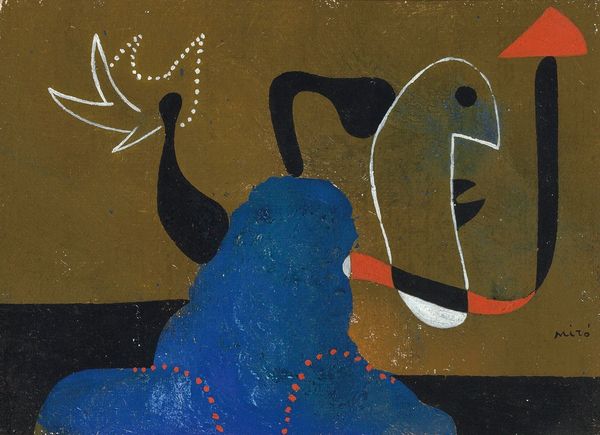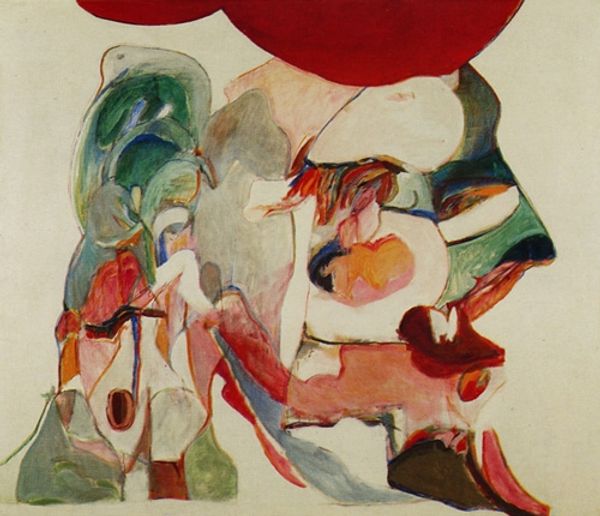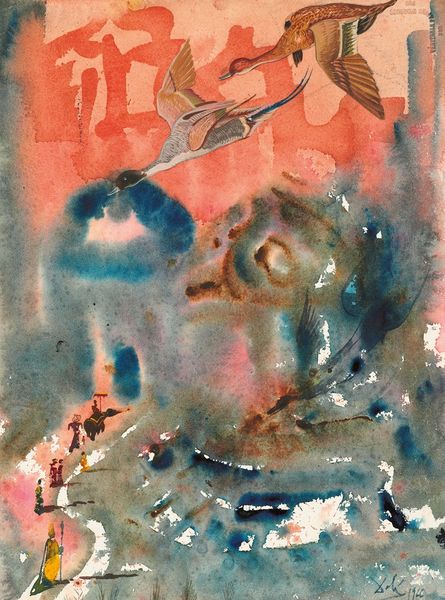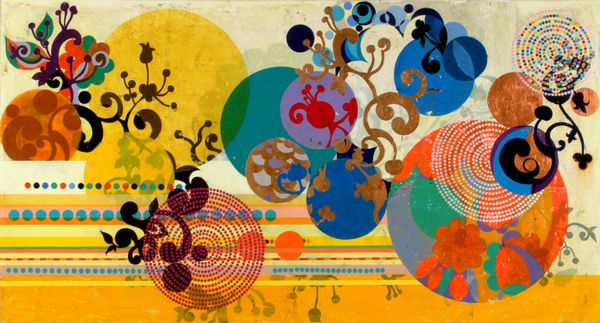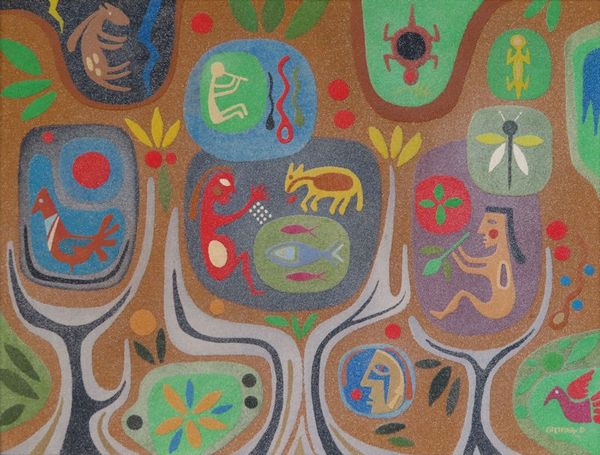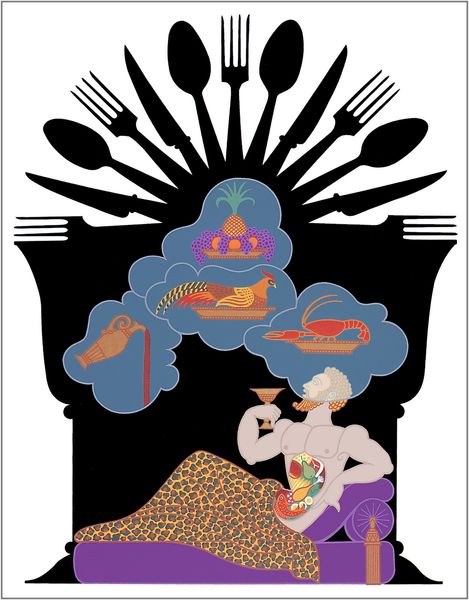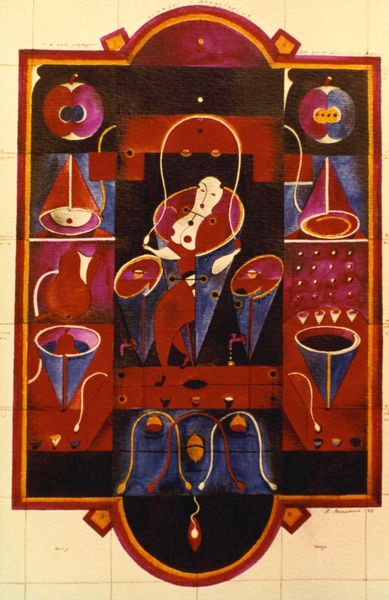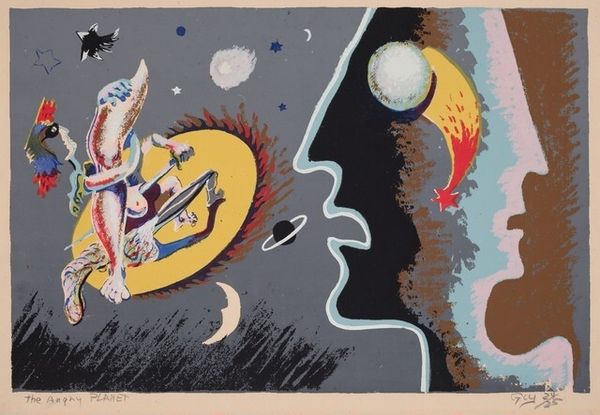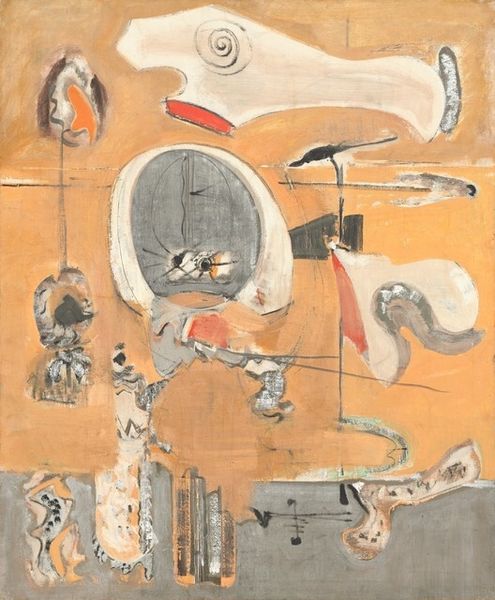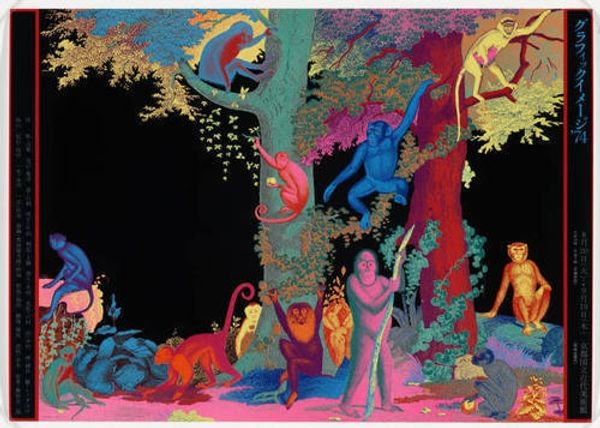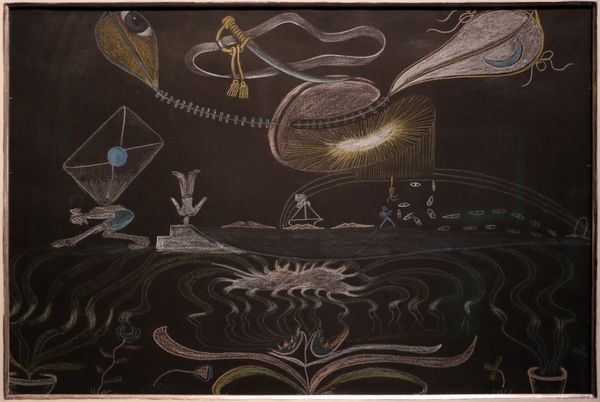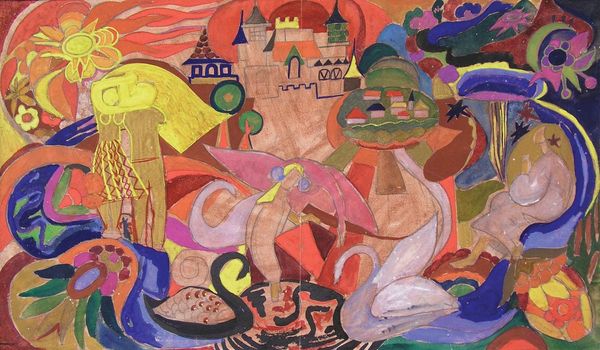
painting, oil-paint
#
art-deco
#
painting
#
oil-paint
#
figuration
#
oil painting
#
geometric
#
biomorphic
#
abstraction
#
surrealism
Dimensions: 92 x 73 cm
Copyright: Joan Miro,Fair Use
Curator: Looking at this, I immediately feel like I’ve walked into a slightly bonkers, very lively party. What's your take on this madcap scene? Editor: The canvas here is Joan Miró's *Dutch Interior II*, an oil painting completed in 1928 and now housed here at the Guggenheim. What strikes me is how it is less a depiction of actual Dutch interiors but rather the collision of art history with personal memory and political turbulence. Curator: It feels so playful! But underneath that, there's something almost aggressive, a tension lurking in those cartoonish shapes. I can’t quite put my finger on it, though. Editor: Indeed. Miro's turn to the theme of the Dutch interior came via postcards sent by a friend, depicting 17th-century genre paintings by Hendrik Martenszoon Sorgh. Rather than a simple copy, Miro digested this history through his personal surrealist filter and the disquiet of pre-war Europe, so it becomes something…other. Curator: The way he reduces figures and objects to these biomorphic forms is fascinating. That bright blue figure dominating the middle—is it dancing? Or is it some kind of strange mechanical being? The ambiguity is thrilling! Editor: It also mirrors how political turmoil disrupts societal conventions. Miro’s reinterpretation highlights art's role not merely as a decorative object, but as an arena to challenge institutional norms, mirroring broader disruptions. The art deco elements also seem deliberately at odds with the implied chaos. Curator: And those colours! That deep, earthy background, juxtaposed with the pops of red, blue, and yellow… it’s almost jarring but so captivating! Editor: The palette serves a social purpose too. Remember the avant-garde often intentionally created a clash, not just to look 'new' but to disturb expectations and provoke thought about where art, and society, should be heading. It's never *just* aesthetic, is it? Curator: Not at all. It also seems deeply personal. Almost like he is using these forms to talk about feelings, memories… unspoken things. Editor: Well said. Miro brilliantly takes established themes to redefine art's responsibilities. Looking at *Dutch Interior II*, we're seeing both his brilliance and how, throughout the 20th century, artists reimagined their connection to both history and audience. Curator: So next time I come to a slightly bonkers party, I will keep my eye out for subversive little surreal shapes. Thank you for opening my eyes. Editor: Likewise! It’s fascinating how deeply historical awareness changes how one appreciates visual dissonance and intended chaos.
Comments
No comments
Be the first to comment and join the conversation on the ultimate creative platform.

